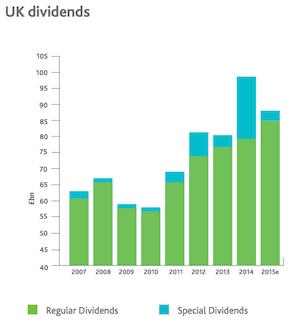Good reads from around the Web.
Anyone who knows they could save £300-a-year by switching their energy supplier but invariably finds a freshly painted wall that needs watching will agree that overwhelming choice is a curse.
I’m a bit nerdy about money and I know I should review all my standing orders and whatnot every 12 months or so, but to be honest I don’t.
Life feels too short to wade through all the alternatives – however much I tell myself the savings equate to a substantial hourly wage.
Happily I do manage it every 2-3 years. The worst kind of choice paralysis is when you never make the decision, with devastating long-term consequences.
It doesn’t really matter what brand of peanut butter you buy.
But it surely matters if you want a life partner yet keep dating until your life is half over because you just couldn’t make your mind up.
A plethora of potential portfolios
Closer to the soul of Monevator, it’s a bit tragic if you put off long-term investing not because you never took any interest, but because you did, only to find there were too many options to choose from.
A deep article on the paradox of choice in The Guardian has some insights on this:
Which of us, really, feels competent to choose between 156 varieties of pension plan?
Who wouldn’t rather choose to lie in a bath of biscuits playing Minecraft?
And yet, at the same time, we are certain that making a decision about our workplace pensions is an important one to get right.
But instead of making that choice, [the researcher says] many defer it endlessly.
One of his colleagues got access to the records of Vanguard, a gigantic mutual-fund company, and found that for every 10 mutual funds the employer offered, rate of participation went down 2% – even though by not participating, employees were passing up as much as $5,000 a year from the employer who would happily match their contribution.
We see something similar in comments on Monevator from people who’ve read all about the different portfolios in our passive investing guides but cannot decide where to get started – or when.
Some never do.
Similarly, while I doubt it’s useful to debate whether you should have 1.26% in frontier markets or just the 0.93%, I’m certain it’s better to think about it when the other 98% of your funds have been sensibly invested.
Choose life
This is why I often suggest to new investors that they just get started splitting their money 50/50 between cash and a UK tracker fund.
When I mention this, knowledgeable readers often protest, perhaps even with a strong dose of being aghast.
Haven’t we written reams about global markets, bonds, asset class diversification and so on? Surely I of all people should know that a 50/50 split between UK stocks and a bank account is not optimal?
Of course I do and no it’s not. But it’s inordinately better than not saving at all.
Like a lot of things – a good diet, jogging, going to nightclubs – investing gets more compelling the more you do it. Best just to get started, and to make refinements as you go.




